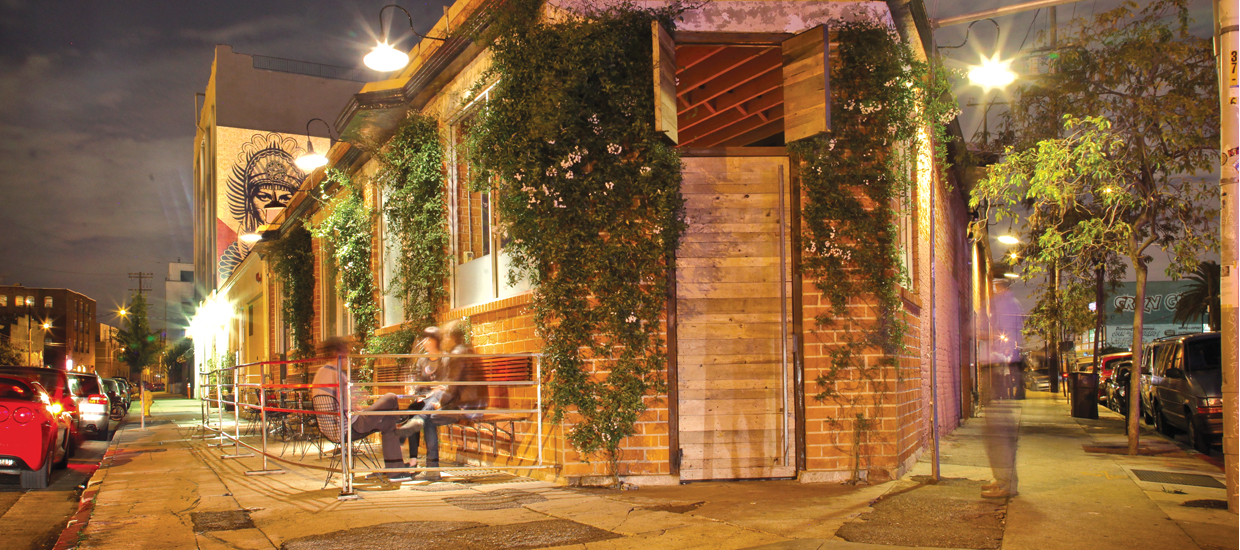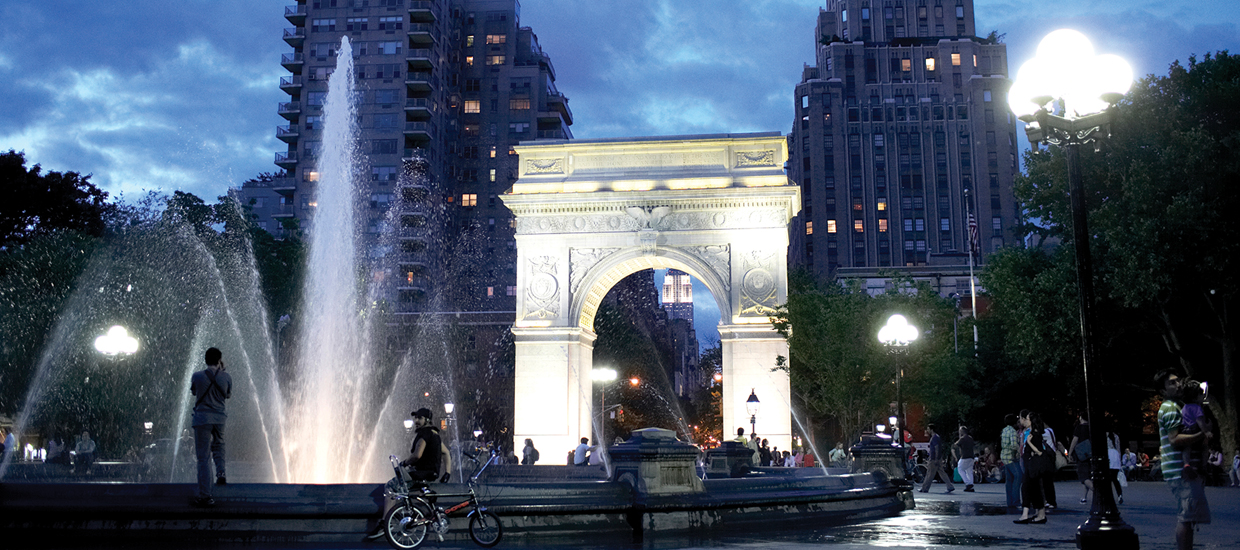New York is a city overflowing with history and adept at reinventing itself. In fact, several of the region’s most frequented places used to be something completely different, providing an intriguing past for visitors to uncover. The following old city buildings have been transformed from their past purposes into modern attractions worth revisiting.
Beauty & Essex
Lower East Side
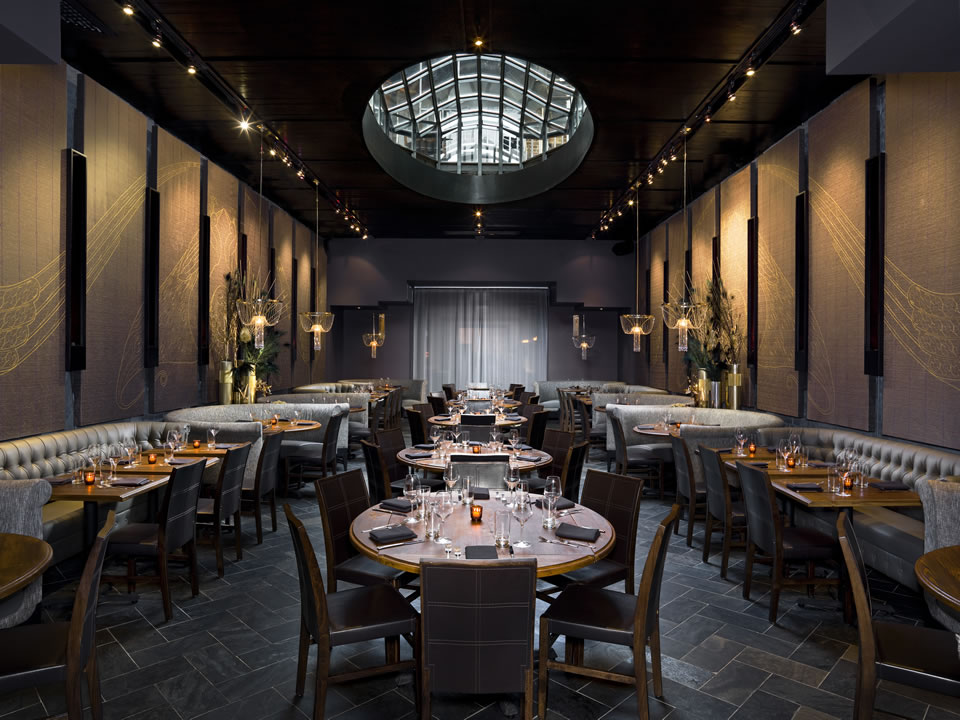
To get into chef Chris Santos’ swanky, celebrity-filled eatery, visitors must first pass through a small, chic pawnshop. Once through the second door, Beauty & Essex reveals a stunning 10,000-square-foot bar, lounge and restaurant, all separated into themed rooms across two levels. Altogether, it conjures a trendy, opulent ambience in a shop-like environment.
Prior to Beauty & Essex’s unveiling in late 2010, the venue hosted Katz Furniture, which still has an outlet a few blocks away on Orchard Street under the name M. Katz and Sons. “The old furniture shop is more present in the pawn shop space and the soaring, luxe department store feel is experienced once one is through the hidden door,” explains Adam Farmerie, a principal of AvroKo, the award-winning firm responsible for the design of Beauty & Essex.
Meilich Katz’s original 1906 shop on Stanton Street operated there for a little more than 50 years. Eventually, Katz was joined by his sons, and they moved the family business to 146 Essex St. in the 1960s, the current address of Beauty & Essex. During this time, it was the go-to spot for furniture, and people came from all over the tri-state area to shop.
As for the restaurant now on Essex Street, while the retro furniture is long gone, everything from the plated food to the chic bathrooms to the dining areas are just as well curated as the famous outlet once was.
Chelsea Market
Chelsea
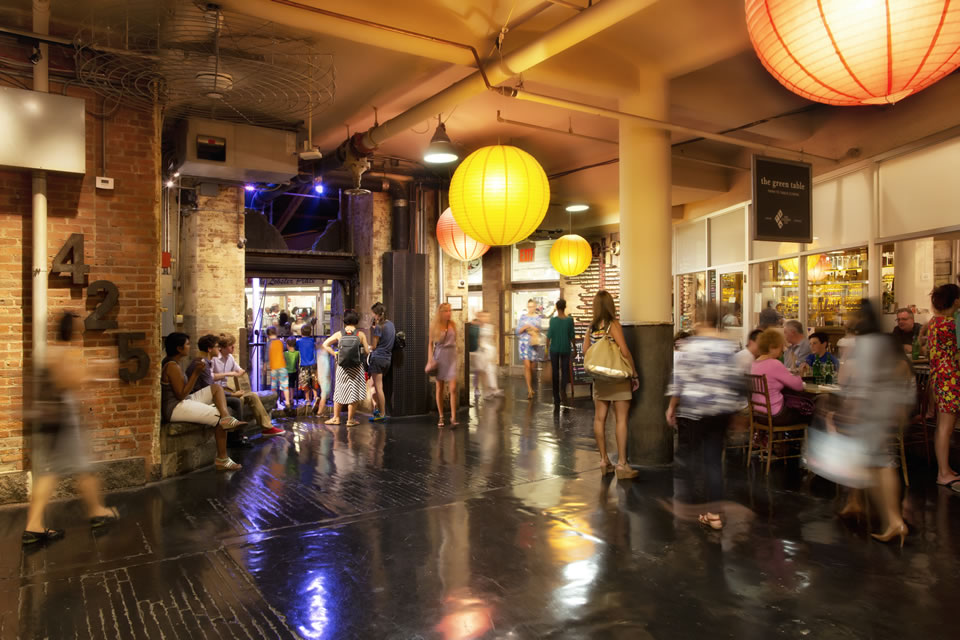
Before the Chelsea Market occupied the block of property between Ninth and 10th avenues and 15th and 16th streets, the complex housed several industrial tenants. Years prior, its most famous occupant was the old National Biscuit Co., aka Nabisco, which operated from 1898 to 1959. In addition to a former bakery, the hallways were once a rail line that carried ingredients and goods in and out of Nabisco and other nearby butchers, according to Michael Phillips, president of Jamestown Properties, which now owns the Chelsea Market.
The transformation into a market began in the early 1990s when the building was purchased by investor Irwin Cohen. Working with Vandeberg Architects, Cohen designed it with the intent to maintain the integrity of its former role. Original structures remained and, in some instances, the existing brickwork and original paint were preserved. The exterior received a more extensive overhaul, however; the facade is tied together by patina brass ribbons that weave through pilasters and windows to give a united aesthetic to the market.
Chelsea Market opened to the community in 1997 and, today, approximately 1.2 million square feet houses food-focused institutions. The collection of eateries and shops fills the first floor, but also inside is the Food Network, Google and YouTube’s East Coast film studios. “I think it’s an amazing amalgamation of ground floor food tenants and upper floor media tenants,” Phillips says. “It makes an amazing dynamic between the two.”
As visitors wander the market, popping into Masaharu Morimoto’s sushi den or picking up artisanal meats at Dickson’s Farmstand Meats, they are reminded of the past: Murals of historical scenes at the 15th Street entrance feature products made by Nabisco.
New York City Fire Museum
Soho
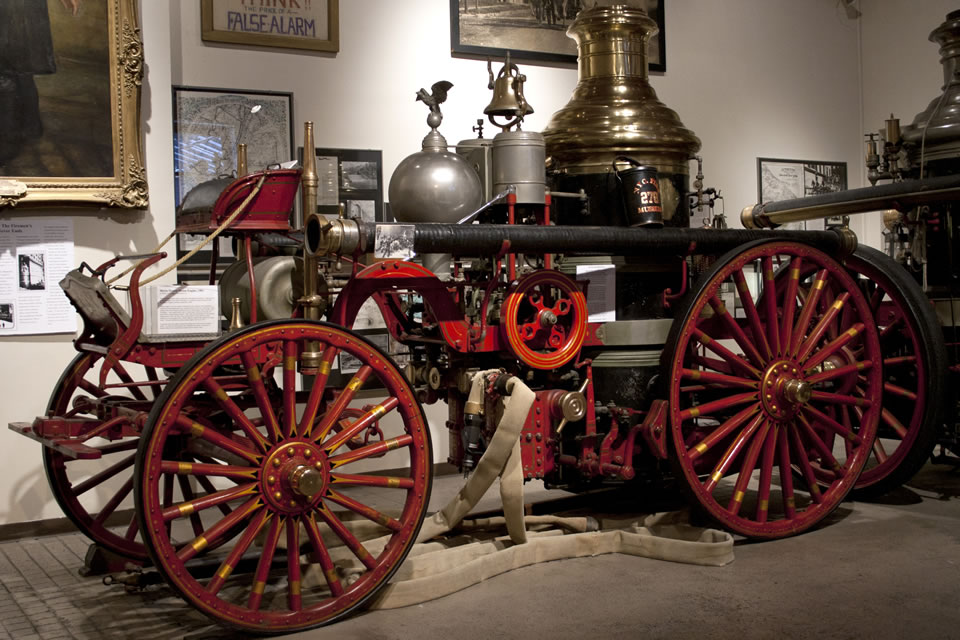
There’s a distinct experience to be had when exploring a fire station. It may be the recollection of early childhood aspirations or the educational factor that make a visit an especially ingrained occasion. When a Beaux Arts firehouse shuts down, it’s only natural a museum should take over to continue to evoke these cherished feelings. Such is the case for the New York City Fire Museum, which has been accessible to the public since 1987.
Built by architect Edward P. Casey in 1904, the three-story brick firehouse was predicted by The New York Times to be one of the largest in the city. The lot size also came with an astonishing price tag at the time: It cost $75,000 to construct Engine Company No. 30. For the ensuing 55 years, the department occupied the Spring Street location, seeing a few additions along the way such as an outpatient clinic for firefighters and their families on the third floor.
In an attempt to slash the budget, Engine Company No. 30 was decommissioned in 1959. Though the firemen were gone, the department still owned the building, and the outpatient clinic remained in use for a couple of decades. Then in 1981, it was decided to move FDNY’s small-scale museum from Duane Street to Soho, after a generous donation of firefighting memorabilia from the Home Insurance Co. called for more room. Currently, for a small admission fee, visitors can explore the featured exhibitions and permanent displays, which include a 9/11 memorial, a section dedicated to fire safety education, and uniforms and fire trucks through the years.
Pier A Harbor House
Financial District
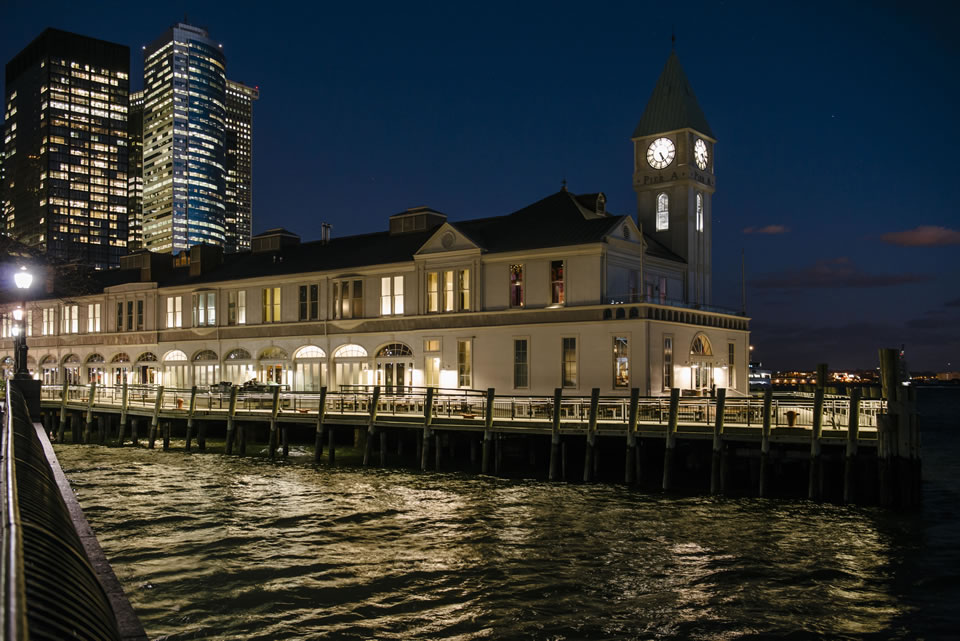
One of the newest repurposed sites in New York City is Pier A Harbor House. Established in 1886, its inaugural years were spent as headquarters for the New York Harbor Police, followed by a role as the entrance for arriving immigrants traveling to Ellis Island. In the 1960s, the marine division of the New York City Fire Department set up its station there.
Throughout the 1900s and early 2000s, the historic building fell sedentary until Peter Poulakakos, Danny McDonald and Michael Jewell (the team behind hot spots Stone Street and The Dead Rabbit) envisioned it as the ultimate dining destination.
The restoration process was rough, as it faced several setbacks, including damage from Hurricane Sandy in 2012. The opening was teased from 2012 to 2013 until finally, this past November, the 28,000-square-foot property unveiled the first portion of its revamp: a social area with a beer hall and oyster bar on the first floor. The other two levels, which include an event venue and fine-dining restaurants, debuted at the start of this year.
In a nod to the building’s past life, gauges and other nautical decor are displayed around the bar. Meanwhile, upstairs pays homage to icons and events through themed spaces like the Liberty and Harrison rooms. Floor-to-ceiling windows allow panoramic views of the ocean and skyline including the Statue of Liberty to come inside.
The High Line
Chelsea
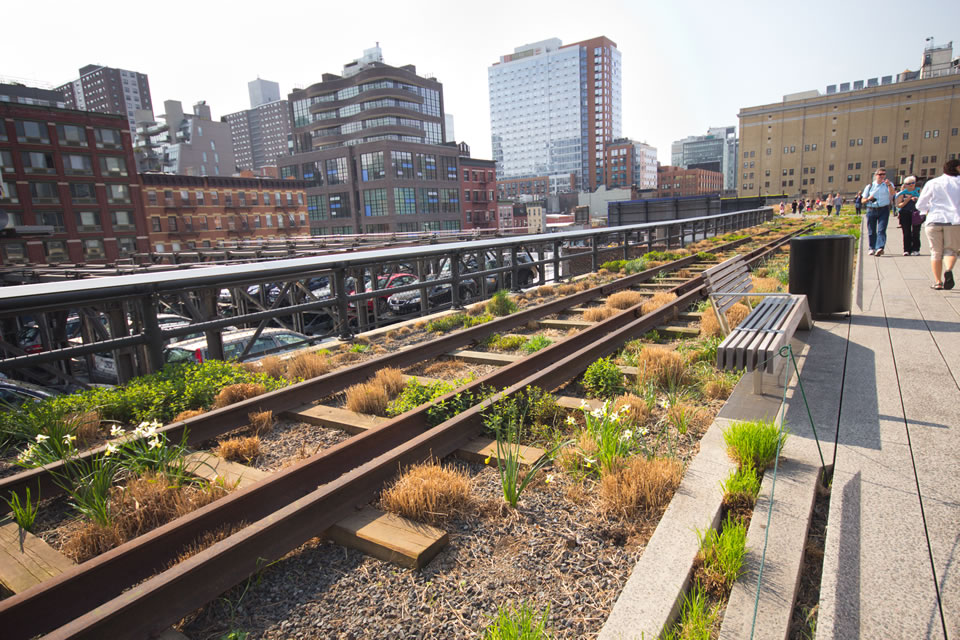
As it is known today, the High Line is an amazing elevated park that features native plants, art installations and, in the warmer months, food vendors. But what makes this 6-year-old park truly special is the views it offers along its approximately 1.5-mile-long pathway.
After one jaunt across the park, it’s difficult to imagine the trails as a train track that transported goods from 34th Street to Spring Street back in 1934 when it was part of the West Side Improvement Project. For almost 50 years, the train functioned as an integral part of society. The growth of interstate trucking, while positive for companies, unfortunately led to the downfall of the rail line, making it obsolete. The last freight the train ever carried was three carloads of frozen turkeys in 1980.
The tracks were almost demolished, but thanks to the legal actions of Chelsea resident Peter Obletz, they remained mostly intact from the Meatpacking District to 34th Street. Major changes came in 1999 when local residents Joshua David and Robert Hammond founded Friends of the High Line with an underlying goal to readapt it as a recreation plot. After many discussions with the city, which took ownership of it in 2005, the High Line opened its first section in June 2009, and the final stretch was completed in September 2014.
Today, credit is given to the creative minds of James Corner Field Operations, Diller Scofidio & Renfro and planting designer Piet Oudolf for taking this long forgotten track and making it into a city icon that draws visitors by the multitudes. “Look how it transformed the West Side,” Petrus says. “These old railroad tracks … were used for commercial purposes, and now it has stimulated retail in that area, and a few million people a year enjoy it.”
—Written by Linnea Covington


